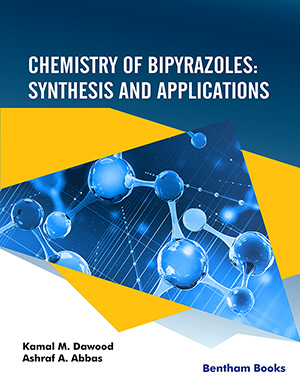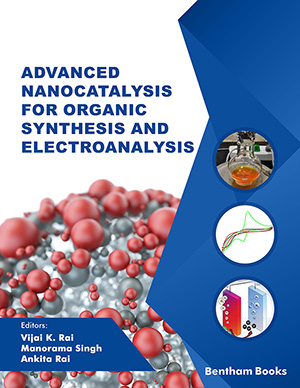
Abstract
Background: Nanocellulose is not only a biocompatible and environmentally friendly material but also has excellent mechanical properties, biodegradability, and a large number of hydroxyl groups that have a strong affinity for water. These characteristics have attracted significant attention from researchers in the field of glucose sensing.
Objective: This review provides a brief overview of the current research status of traditional materials used in glucose sensors. The sensing performance, chemical stability, and environmental properties of nanocellulose-based glucose sensors are compared and summarized based on the three sensing methods: electrochemical sensing, colorimetric sensing, and fluorescence sensing. The article focuses on recent strategies for glucose sensing using nanocellulose as a matrix. The development prospects of nanocellulose-based glucose sensors are also discussed.
Conclusion: Nanocellulose has outstanding structural characteristics that contribute significantly to the sensing performance of glucose sensors in different detection modes. However, the preparation process for high-quality nanocellulose is complicated and has a low yield. Furthermore, the sensitivity and selectivity of nanocellulose-based glucose sensors require further improvement.
Keywords: Nanocellulose, glucose detection, electrochemical sensing, colorimetric sensing, fluorescence sensing, matrix.
Current Organic Synthesis
Title:Research Progress on the Application of Nanocellulose in Glucose Sensing
Volume: 22 Issue: 1
Author(s): Jianzhong Yuan, Caichao Wan*, Song Wei, Huayun Chai and Tao Tao*
Affiliation:
- College of Materials Science and Engineering, Central South University of Forestry and Technology, Changsha, 410004, P. R. China
- Yihua Lifestyle Technology Co., Ltd, Huaidong Industrial Zone, Lianxia Town, Chenghai District, Shantou, 515834, P.R. China
- College of Materials Science and Engineering, Central South University of Forestry and Technology, Changsha, 410004, P. R. China
Keywords: Nanocellulose, glucose detection, electrochemical sensing, colorimetric sensing, fluorescence sensing, matrix.
Abstract:
Background: Nanocellulose is not only a biocompatible and environmentally friendly material but also has excellent mechanical properties, biodegradability, and a large number of hydroxyl groups that have a strong affinity for water. These characteristics have attracted significant attention from researchers in the field of glucose sensing.
Objective: This review provides a brief overview of the current research status of traditional materials used in glucose sensors. The sensing performance, chemical stability, and environmental properties of nanocellulose-based glucose sensors are compared and summarized based on the three sensing methods: electrochemical sensing, colorimetric sensing, and fluorescence sensing. The article focuses on recent strategies for glucose sensing using nanocellulose as a matrix. The development prospects of nanocellulose-based glucose sensors are also discussed.
Conclusion: Nanocellulose has outstanding structural characteristics that contribute significantly to the sensing performance of glucose sensors in different detection modes. However, the preparation process for high-quality nanocellulose is complicated and has a low yield. Furthermore, the sensitivity and selectivity of nanocellulose-based glucose sensors require further improvement.
Export Options
About this article
Cite this article as:
Yuan Jianzhong, Wan Caichao*, Wei Song, Chai Huayun and Tao Tao*, Research Progress on the Application of Nanocellulose in Glucose Sensing, Current Organic Synthesis 2025; 22 (1) . https://dx.doi.org/10.2174/0115701794273511231212072414
| DOI https://dx.doi.org/10.2174/0115701794273511231212072414 |
Print ISSN 1570-1794 |
| Publisher Name Bentham Science Publisher |
Online ISSN 1875-6271 |
Call for Papers in Thematic Issues
Biorthogonal Chemistry: A translational chemical tool for in vivo applications
After the discovery in 1990, bioorthogonal chemistry encompassed a set of diverse fast-paced selective chemical reactions, facilitating the study of biomolecules under physiological aura without intervening in the biochemical processes. Over the past two decades, significant progress has been witnessed in bioorthogonal reactions such as Staudinger ligation, metal-catalyzed coupling reactions, ...read more
Design and Synthesis of Green Pesticides
The development of green new pesticides is currently one of the hotspots in the field of pesticide research, aiming to develop efficient, environmentally friendly, and safe pesticide products to meet the needs of modern agricultural production. Green new pesticides prioritize environmental friendliness and ecological safety. Therefore, during the research and ...read more
Exploring the Role of Chemical Graph Theory in Advancing Current Organic Synthesis
Organic synthesis is a fundamental discipline in chemistry, crucial for the creation of complex molecules with diverse applications in pharmaceuticals, materials science, and beyond. However, the process of designing efficient synthetic routes for target molecules remains challenging. Chemical graph theory, a branch of theoretical chemistry, offers powerful tools for understanding ...read more
Novel Green Approaches in the Synthesis of Bioactive Molecules
This special issue regards several aspects of green chemistry, focusing on innovative strategies to run organic synthesis reactions in a more environmentally friendly. Interesting articles or reviews about the critical role of green methodologies in reducing the environmental impact of chemical processes are welcome. Moreover, novel methodological studies using sustainable ...read more
Related Journals
 18
18
- Author Guidelines
- Graphical Abstracts
- Fabricating and Stating False Information
- Research Misconduct
- Post Publication Discussions and Corrections
- Publishing Ethics and Rectitude
- Increase Visibility of Your Article
- Archiving Policies
- Peer Review Workflow
- Order Your Article Before Print
- Promote Your Article
- Manuscript Transfer Facility
- Editorial Policies
- Allegations from Whistleblowers
Related Articles
-
SIRT1 as a Therapeutic Target in Diabetic Complications
Current Medicinal Chemistry Effects of Synthetic Peptides on the Inflammatory Response and their Therapeutic Potential
Mini-Reviews in Medicinal Chemistry Synthetic and Application Perspectives of Azapodophyllotoxins: Alternative Scaffolds of Podophyllotoxin
Current Medicinal Chemistry Profile of Gut Microbiota of Adults with Diabetes Mellitus Type 1: A Systematic Review
Current Diabetes Reviews The Role of Sigma-1 Receptor, an Intracellular Chaperone in Neurodegenerative Diseases
Current Neuropharmacology Pharmacological Treatment of Obesity: Current Standards and Future Perspectives
Immunology, Endocrine & Metabolic Agents in Medicinal Chemistry (Discontinued) The Gender Bender effect in Periodontal Immune Response
Endocrine, Metabolic & Immune Disorders - Drug Targets Ezetimibe and Reactive Oxygen Species
Current Vascular Pharmacology 1,5-Diaryl-3-oxo-1,4-pentadienes: A Case for Antineoplastics with Multiple Targets
Current Medicinal Chemistry Lymnaea EGF and Gigantoxin I, Novel Invertebrate Members of the Epidermal Growth Factor Family
Current Pharmaceutical Design The Effects of Gender and CYP46 and Apo E Polymorphism on 24S-Hydroxycholesterol Levels in Alzheimers Patients Treated with Statins
Current Alzheimer Research Synthetic LXR Agonist Suppresses Endogenous Cholesterol Biosynthesis and Efficiently Lowers Plasma Cholesterol
Current Pharmaceutical Biotechnology Splenic Gaucheroma Leading to Incidental Diagnosis of Gaucher Disease in a 46-Year-Old Man with a Rare GBA Mutation: A Case Report
Endocrine, Metabolic & Immune Disorders - Drug Targets Angiogenesis and Metastasis Inhibitors for the Treatment of Malignant Melanoma
Mini-Reviews in Medicinal Chemistry Recent Trends of Biocompatible and Biodegradable Nanoparticles in Drug Delivery: A Review
Current Medicinal Chemistry Meet Our Editorial Board Member
Nanoscience & Nanotechnology-Asia Nongenomic Actions of Thyroid Hormones: From Basic Research to Clinical Applications. An Update
Immunology, Endocrine & Metabolic Agents in Medicinal Chemistry (Discontinued) Heavy Metal Toxicity in Humans and its Preventive and Control Measures
Current Nutrition & Food Science Type 3 Diabetes Mellitus: A Novel Implication of Alzheimers Disease
Current Topics in Medicinal Chemistry Novel Antimicrobial Agents Against Multi-drug-resistant Gram-negative Bacteria: An Overview
Recent Patents on Anti-Infective Drug Discovery























